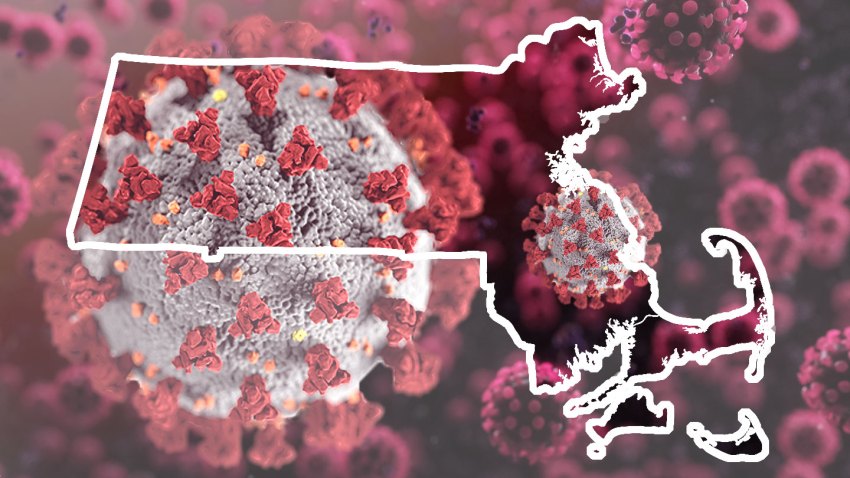Twelve of Massachusetts' 14 counties are now considered high risk for COVID-19, up two since last week, according to the Centers for Disease Control and Prevention.
The latest data released Thursday shows that Barnstable, Berkshire, Bristol, Dukes, Essex, Franklin, Middlesex, Nantucket, Norfolk, Plymouth, Suffolk, and Worcester counties are all listed as high risk. Only Hampden and Hampshire counties in the western part of the state are medium risk, with no counties in the low risk category.

Despite the new CDC community risk data, the number of COVID cases, test positivity and Boston wastewater data have all been declining in recent days, giving hope that the current surge may be coming to an end.
State health officials reported 3,485 new COVID-19 cases and 17 more deaths on Thursday. The state's seven-day average positivity was at 8.32% Thursday, compared to 8.33% on Wednesday. Both metrics are substantially lower than they were a week ago.
And after increasing for months, the number of new cases in Massachusetts schools has gone down in recent days. The total of 12,729 cases was a decrease of about 31.9% from last Thursday's report, when a total of 18,698 cases were identified.
The most recent update from the Massachusetts Water Resources Authority's COVID-19 wastewater tracker, submitted over the weekend, also showed COVID levels declining somewhat.
What about the rest of New England?

New Hampshire took a decided turn for the worse over the past week, going from having one county in the low risk category and two in the medium risk category to having all but one county listed as high risk. Only Strafford County along the Maine border is categorized as medium risk.
Vermont, on the other hand, saw an improvement over the past week, with seven counties -- Addison, Caledonia, Chittenden, Franklin, Grand Isle, Lamoille and Orleans -- now in the low risk category. Essex, Orange, Washington, Windham and Windsor counties are medium risk, with only Bennington and Rutland counties in the high risk category.
Main also saw some improvement, with Sagadahoc dropping to low risk and Cumberland, Kennebec, Knox, Lincoln, Piscataquis, Somerset, Waldo, Washington and York listed as medium risk. Aroostook, Androscoggin, Franklin, Hancock, Oxford and Penobscot are all high risk.
Connecticut is mostly in the high risk category, other than New London County.
In Rhode Island, Bristol, Kent, Providence and Washington counties remain in the medium risk category, while Newport County went from medium to high.
Residents in counties with high risk are urged to wear masks indoors in public and on public transportation, to stay up to date with vaccines and to get tested if they have symptoms, according to the CDC.
Residents in areas with medium risk are encouraged to wear a mask if they have symptoms, a positive test or exposure to someone with COVID-19. Anyone at high risk for severe illness should also consider wearing a mask indoors in public and taking additional precautions, the CDC says.
The majority of cases in New England right now are still being attributed to the "stealth" omicron variant BA.2, and the BA.2.12.1 subvariant. But the rise of new strains like BA.4 and BA.5 in South Africa are raising concerns that the U.S. could experience another COVID-19 wave this summer.
"As with everything else, we'll tell you for sure once it's done," Dr. Daniel Kuritzkes of Brigham and Women's Hospital said this week. "I don't think we can predict right now if we're really at the end of the omicron surge or if we're just transitioning to a difference phase of the omicron surge."




